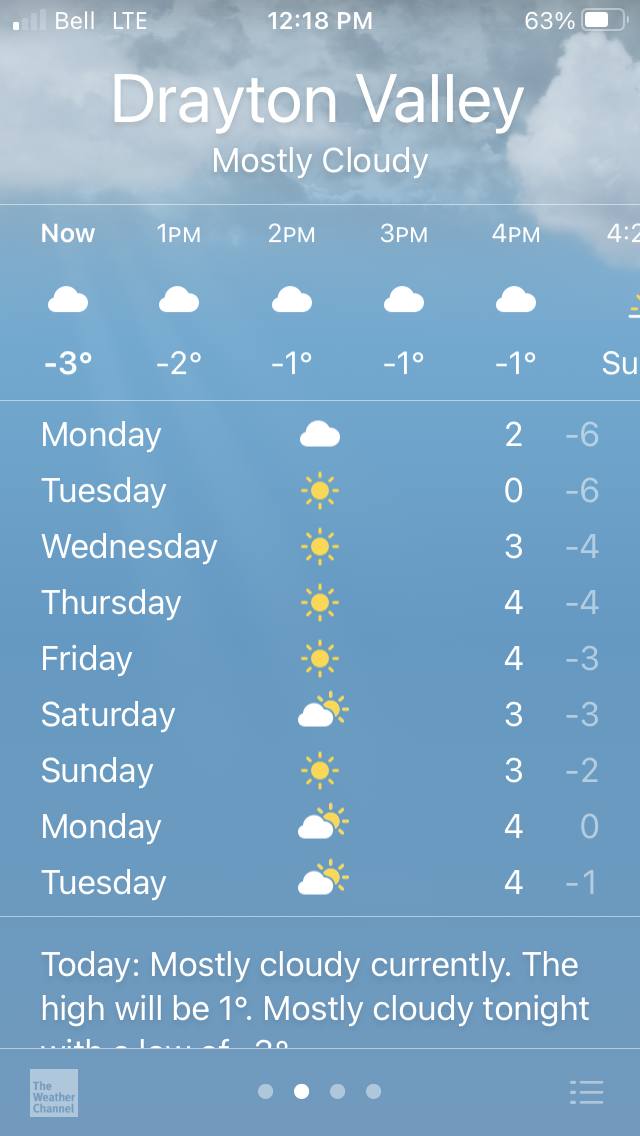https://weather.com/forecast/national/news/2020-11-24-december-2020-temperature-outlook-forecast-the-weather-company?cm_ven=hp-slot-1
What Changed This Forecast? It's Not La Niña.
Heading into winter, a strengthening La Niña is expected to last through spring and could become strong, according to the latest outlook from NOAA's Climate Prediction Center.
This periodic cooling of sea-surface temperatures in the equatorial Pacific Ocean can influence weather conditions across the globe.
La Niña winters are typically chilly and wet in the Pacific Northwest and northern Rockies and chilly in the northern Plains. Conversely, in the South and parts of the East, La Niña most often delivers warm and dry conditions.But La Niña isn't the only factor that can shape the atmospheric pattern.
The forecast for early December indicates a large northward bulge of the jet stream over the western U.S. and western Canada, rather than over the north Pacific Ocean, and a pronounced southward plunge over the southern and eastern U.S.
This pattern, known to meteorologists as the positive phase of the Pacific-North American (PNA) oscillation, would bring cooler, wetter weather to the South and East and warmer, drier weather to the Northwest and northern Rockies.
This type of pattern could also bring the possibility of wintry precipitation in parts of the South and storms to the East Coast.
"It's a pattern that more closely resembles something you might see during mid-winter in a strong El Niño," said Todd Crawford, chief meteorologist at The Weather Company.
Crawford said this strong positive PNA pattern is being triggered by warmer than average Indian Ocean water producing more tropical thunderstorms farther west than is typical in a La Niña.
Where these thunderstorms are more numerous and persistent – and where they're more absent – can impact the weather pattern over the Pacific Ocean and over the United States.
As to how long this non-La Niña pattern may hold into December, it's a tricky call.
"We do expect the early month pattern to flip to a more typical La Niña pattern by the latter half of the month," Crawford said.
Average December Temperatures
Highs in December are typically in the 30s or colder along most of the northern third of the U.S. from the northern Great Basin and northern Rockies to the northern Plains, upper Midwest, Great Lakes and interior Northeast.
What Changed This Forecast? It's Not La Niña.
Heading into winter, a strengthening La Niña is expected to last through spring and could become strong, according to the latest outlook from NOAA's Climate Prediction Center.
This periodic cooling of sea-surface temperatures in the equatorial Pacific Ocean can influence weather conditions across the globe.
La Niña winters are typically chilly and wet in the Pacific Northwest and northern Rockies and chilly in the northern Plains. Conversely, in the South and parts of the East, La Niña most often delivers warm and dry conditions.But La Niña isn't the only factor that can shape the atmospheric pattern.
The forecast for early December indicates a large northward bulge of the jet stream over the western U.S. and western Canada, rather than over the north Pacific Ocean, and a pronounced southward plunge over the southern and eastern U.S.
This pattern, known to meteorologists as the positive phase of the Pacific-North American (PNA) oscillation, would bring cooler, wetter weather to the South and East and warmer, drier weather to the Northwest and northern Rockies.
This type of pattern could also bring the possibility of wintry precipitation in parts of the South and storms to the East Coast.
"It's a pattern that more closely resembles something you might see during mid-winter in a strong El Niño," said Todd Crawford, chief meteorologist at The Weather Company.
Crawford said this strong positive PNA pattern is being triggered by warmer than average Indian Ocean water producing more tropical thunderstorms farther west than is typical in a La Niña.
Where these thunderstorms are more numerous and persistent – and where they're more absent – can impact the weather pattern over the Pacific Ocean and over the United States.
As to how long this non-La Niña pattern may hold into December, it's a tricky call.
"We do expect the early month pattern to flip to a more typical La Niña pattern by the latter half of the month," Crawford said.
Average December Temperatures
Highs in December are typically in the 30s or colder along most of the northern third of the U.S. from the northern Great Basin and northern Rockies to the northern Plains, upper Midwest, Great Lakes and interior Northeast.


Comment